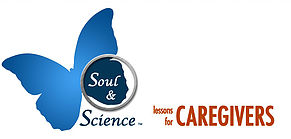BOOKS

The American Book of Living & Dying: Lessons in Healing Spiritual Pain
―Richard Groves, Random House/Ten Speed Press, 2010
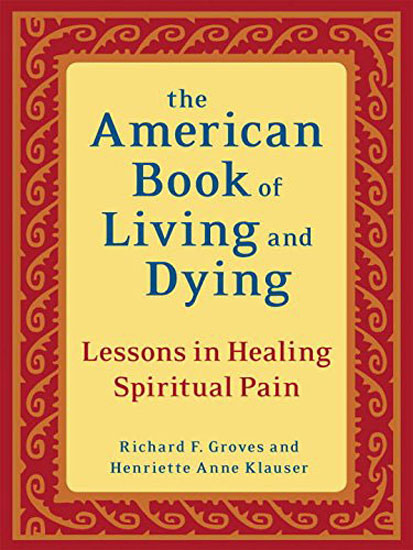 Internationally acclaimed book co-authored by Soul & Science presenter, Richard Groves. New York Times review says, “As groundbreaking as the work of Elisabeth Kubler-Ross…”
Internationally acclaimed book co-authored by Soul & Science presenter, Richard Groves. New York Times review says, “As groundbreaking as the work of Elisabeth Kubler-Ross…”
For most people, the thought of dying or caring for a terminally ill friend or family member raises fears and questions as old as humanity: What is a “good death”? What appropriate preparations should be made? How do we best support our loved ones as life draws to its close? In this nondenominational handbook, Richard F. Groves and Henriette Anne Klauser provide comfort, direction, and hope to the dying and their caregivers through nine archetypal stories that illustrate the most common end-of-life concerns. Drawing from personal experiences, the authors offer invaluable guidance on easing emotional pain and navigating this difficult final passage.
With a compelling new preface, this edition also features an overview of the hospice movement; a survey of Celtic, Tibetan, Egyptian, and other historic perspectives on the sacred art of dying; as well as various therapies, techniques, and rituals to alleviate suffering, stimulate reflection, and strengthen interpersonal bonds. The American Book of Living and Dying gives us courage to trust our deepest instincts, and reminds us that by telling the stories of those who have passed, we remember, honor, and continue to learn from them.
Focus of this book parallels this Soul & Science program series and offers nine case studies and best practices related to person’s dealing with spiritual pain at the end of life.
The Tibetan Book of Living and Dying
―SSogyal Rinpoche and Patrick Gaffney, 1992
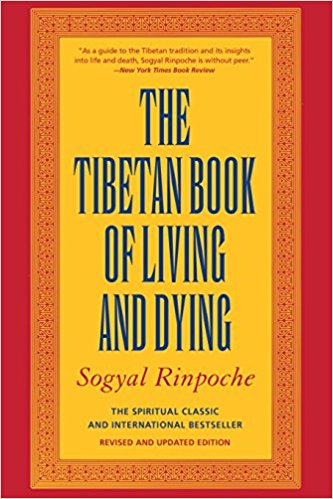 “A magnificent achievement. In its power to touch the heart, to awaken consciousness, [The Tibetan Book of Living and Dying] is an inestimable gift.”
“A magnificent achievement. In its power to touch the heart, to awaken consciousness, [The Tibetan Book of Living and Dying] is an inestimable gift.”
—San Francisco Chronicle
A newly revised and updated edition of the internationally bestselling spiritual classic, The Tibetan Book of Living and Dying, written by Sogyal Rinpoche, is the ultimate introduction to Tibetan Buddhist wisdom. An enlightening, inspiring, and comforting manual for life and death that the New York Times calls, “The Tibetan equivalent of [Dante’s] The Divine Comedy,” this is the essential work that moved Huston Smith, author of The World’s Religions, to proclaim, “I have encountered no book on the interplay of life and death that is more comprehensive, practical, and wise.”
The Last Lecture
―Randy Pausch, 2008
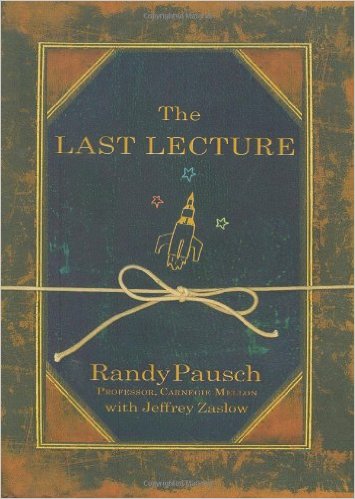 A lot of professors give talks titled “The Last Lecture.” Professors are asked to consider their demise and to ruminate on what matters most to them. And while they speak, audiences can’t help but mull the same question: What wisdom would we impart to the world if we knew it was our last chance? If we had to vanish tomorrow, what would we want as our legacy?
A lot of professors give talks titled “The Last Lecture.” Professors are asked to consider their demise and to ruminate on what matters most to them. And while they speak, audiences can’t help but mull the same question: What wisdom would we impart to the world if we knew it was our last chance? If we had to vanish tomorrow, what would we want as our legacy?
When Randy Pausch, a computer science professor at Carnegie Mellon, was asked to give such a lecture, he didn’t have to imagine it as his last, since he had recently been diagnosed with terminal cancer. But the lecture he gave–“Really Achieving Your Childhood Dreams”–wasn’t about dying. It was about the importance of overcoming obstacles, of enabling the dreams of others, of seizing every moment (because “time is all you have…and you may find one day that you have less than you think”). It was a summation of everything Randy had come to believe. It was about living.
In this book, Randy Pausch has combined the humor, inspiration and intelligence that made his lecture such a phenomenon and given it an indelible form. It is a book that will be shared for generations to come.
“We cannot change the cards we are dealt, just how we play the hand.” –Randy Pausch
The Denial of Death
―Ernest Becker, 1974
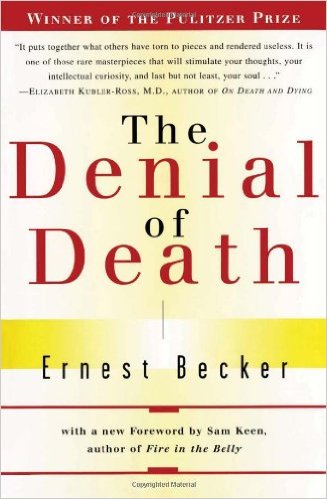 Winner of the Pulitzer prize in 1974 and the culmination of a life’s work, The Denial of Death is Ernest Becker’s brilliant and impassioned answer to the “why” of human existence. In bold contrast to the predominant Freudian school of thought, Becker tackles the problem of the vital lie — man’s refusal to acknowledge his own mortality. In doing so, he sheds new light on the nature of humanity and issues a call to life and its living that still resonates more than twenty years after its writing.
Winner of the Pulitzer prize in 1974 and the culmination of a life’s work, The Denial of Death is Ernest Becker’s brilliant and impassioned answer to the “why” of human existence. In bold contrast to the predominant Freudian school of thought, Becker tackles the problem of the vital lie — man’s refusal to acknowledge his own mortality. In doing so, he sheds new light on the nature of humanity and issues a call to life and its living that still resonates more than twenty years after its writing.
Tuesdays with Morrie: An Old Man, a Young Man, and Life’s Greatest Lesson
―Mitch Albom, 2002
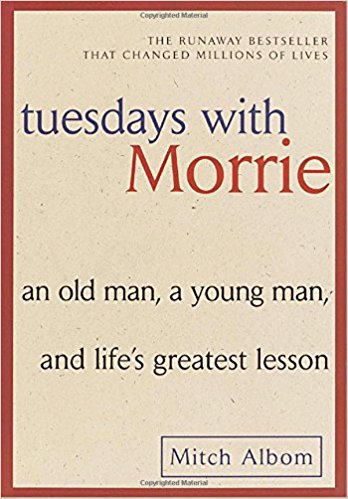 Maybe it was a grandparent, or a teacher, or a colleague. Someone older, patient and wise, who understood you when you were young and searching, helped you see the world as a more profound place, gave you sound advice to help you make your way through it.
Maybe it was a grandparent, or a teacher, or a colleague. Someone older, patient and wise, who understood you when you were young and searching, helped you see the world as a more profound place, gave you sound advice to help you make your way through it.
For Mitch Albom, that person was Morrie Schwartz, his college professor from nearly twenty years ago.
Maybe, like Mitch, you lost track of this mentor as you made your way, and the insights faded, and the world seemed colder. Wouldn’t you like to see that person again, ask the bigger questions that still haunt you, receive wisdom for your busy life today the way you once did when you were younger?
Mitch Albom had that second chance. He rediscovered Morrie in the last months of the older man’s life. Knowing he was dying, Morrie visited with Mitch in his study every Tuesday, just as they used to back in college. Their rekindled relationship turned into one final “class”: lessons in how to live.
Tuesdays with Morrie is a magical chronicle of their time together, through which Mitch shares Morrie’s lasting gift with the world.
It’s been ten years since Mitch Albom first shared the wisdom of Morrie Schwartz with the world. Now–twelve million copies later–in a new afterword, Mitch Albom reflects again on the meaning of Morrie’s life lessons and the gentle, irrevocable impact of their Tuesday sessions all those years ago. . .
The Four Things That Matter Most
―Ira Byock MD, Random House/Atria Books, 2005
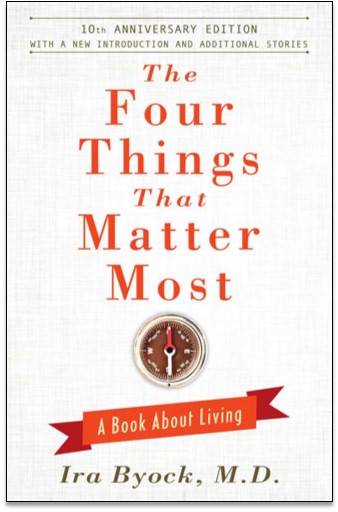 Four simple phrases — “Please forgive me,” “I forgive you,” “Thank you,” and “I love you” — carry enormous power. In many ways, they contain the most powerful words in our language. These four phrases provide us with a clear path to emotional wellness; they guide us through the thickets of interpersonal difficulties to a conscious way of living that is full of integrity and grace.In The Four Things That Matter Most, Dr. Ira Byock, an international leader in palliative care, teaches us how to practice these life-affirming words in our day-to-day lives. Too often we assume that the people we love really know we love them. Dr. Byock reveals the value of stating the obvious and provides insights into how we burden ourselves by hanging on to old grudges unconsciously and unnecessarily. He shows us how to avoid living with those awkward silences and uncomfortable issues that distance us from the people we love and erode our sense of well-being and joy. His insights and stories help us to forgive, appreciate, love, and celebrate one another more fully.
Four simple phrases — “Please forgive me,” “I forgive you,” “Thank you,” and “I love you” — carry enormous power. In many ways, they contain the most powerful words in our language. These four phrases provide us with a clear path to emotional wellness; they guide us through the thickets of interpersonal difficulties to a conscious way of living that is full of integrity and grace.In The Four Things That Matter Most, Dr. Ira Byock, an international leader in palliative care, teaches us how to practice these life-affirming words in our day-to-day lives. Too often we assume that the people we love really know we love them. Dr. Byock reveals the value of stating the obvious and provides insights into how we burden ourselves by hanging on to old grudges unconsciously and unnecessarily. He shows us how to avoid living with those awkward silences and uncomfortable issues that distance us from the people we love and erode our sense of well-being and joy. His insights and stories help us to forgive, appreciate, love, and celebrate one another more fully.
Death & Dying, Life & Living
―Charles A. Corr, Donna M. Corr, 2012
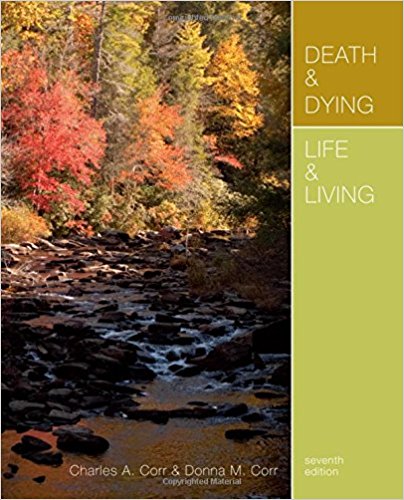 Practical and inspiring, this field-leading book helps students learn how to navigate encounters with death, dying, and bereavement. The authors integrate classical and contemporary material, present task-based approaches for individual and family coping, and include four substantial chapters devoted to death-related issues faced by children, adolescents, young and middle-aged adults, and older adults. The book discusses a variety of cultural and religious perspectives that affect people’s understanding and practices associated with such encounters. Practical guidelines for constructive communication are designed to encourage productive living in the face of death.
Practical and inspiring, this field-leading book helps students learn how to navigate encounters with death, dying, and bereavement. The authors integrate classical and contemporary material, present task-based approaches for individual and family coping, and include four substantial chapters devoted to death-related issues faced by children, adolescents, young and middle-aged adults, and older adults. The book discusses a variety of cultural and religious perspectives that affect people’s understanding and practices associated with such encounters. Practical guidelines for constructive communication are designed to encourage productive living in the face of death.
